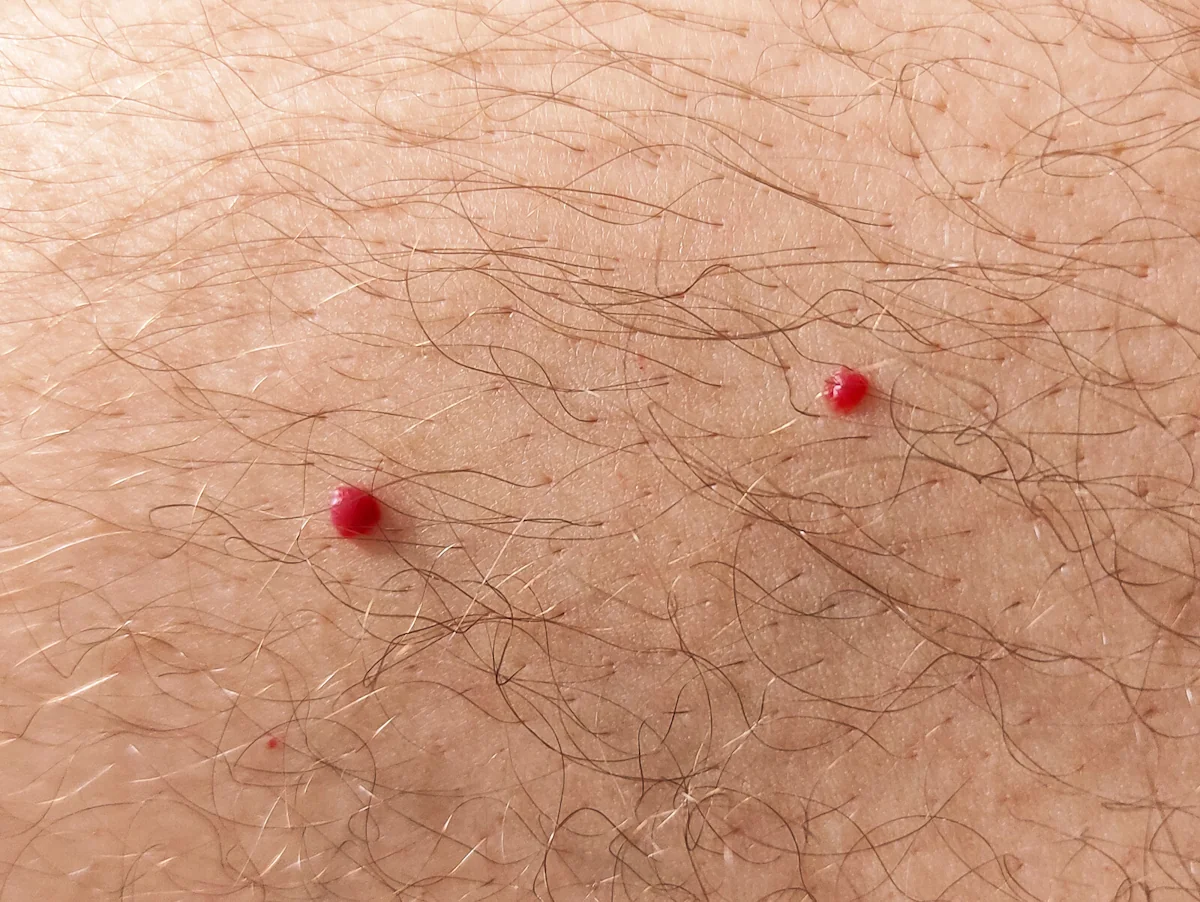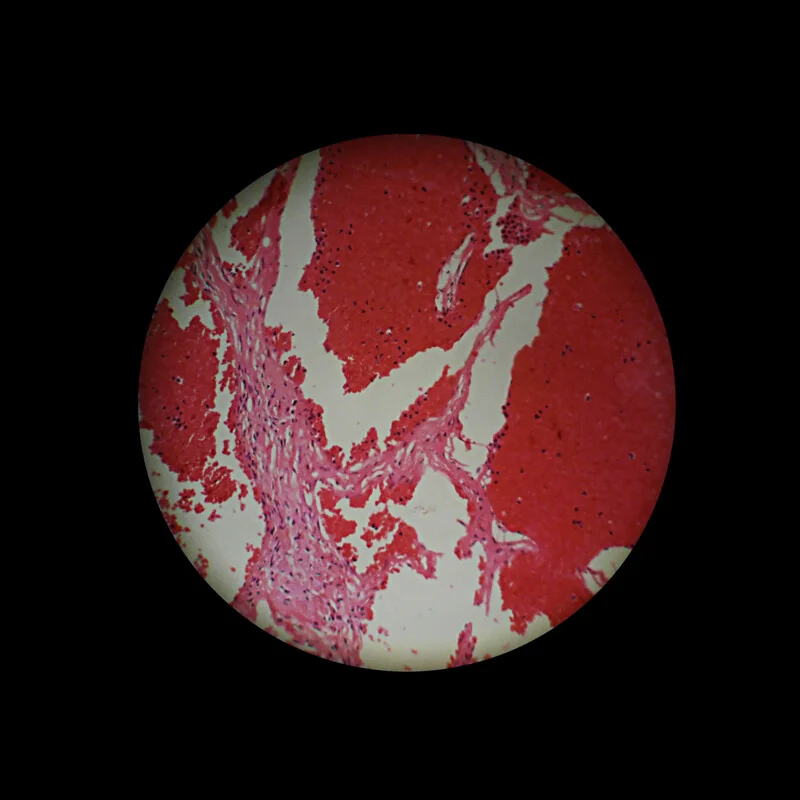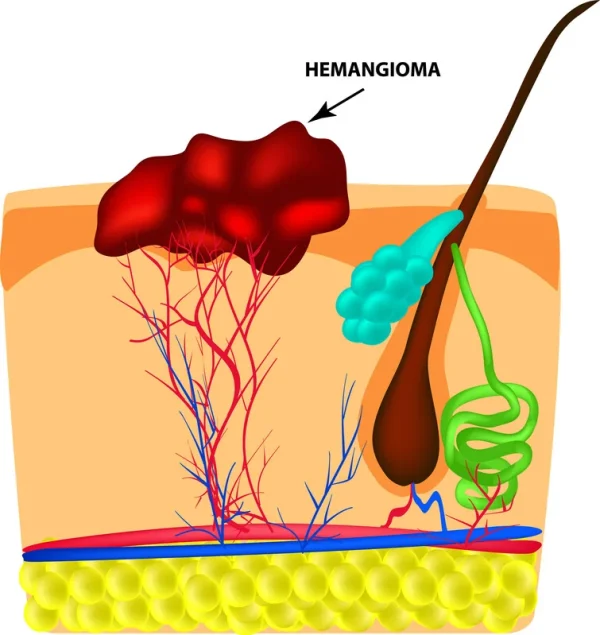What is a haemangioma?
Haemangiomas, better known as haemangiomas, arise from new or malformed blood vessels in the skin and usually appear as red spots. They are benign tumours of the skin that belong to the group of angiomas. They most often appear in newborns, right after birth, but can also develop in various sizes in adulthood. Such vascular growths can occur practically anywhere, on the skin, but internal organs can also be affected. They are usually confined to one part of the body and are harmless.
What causes haemangiomas?
The exact cause for the development of haemangiomas has not yet been fully clarified by science. Genetic and familial predispositions seem to play a role in their development. They are benign growths of the blood vessels, but they are usually benign. Haemangiomas mainly develop on the skin, but can also occur as small tumours in internal organs.
How can you tell that it is a haemangioma?
Typical for these skin changes is the raspberry-red colour, with a surface structure reminiscent of berries. Everything is represented, from small dots to larger bumps. The benign tumours sometimes regress spontaneously.
However, monitoring by a specialist is always recommended in order to be able to detect a change. A biopsy provides clear information as to whether a malignant skin change is present in cases of doubt.

The most important forms of haemangiomas
Infantile haemangiomas:
Often appear right after birth or in the first few months after the babies are born. However, up to 70 % of the red spots completely disappear by the age of 10. It is therefore worth waiting before treating children.
Capillary haemangiomas:
This form of haemangioma is the most common. They are found in children, as small, fast-growing red dots or spots. They are generally harmless.
Senile haemangiomas:
The haemangiomas, also known as age warts, can often be found in large numbers on the skin of older people. They are red or brown spots that appear more frequently on the skin as part of the ageing process. They are usually found in large numbers on the upper part of the body. The tardive haemangiomas are a dilatation of existing blood vessels, do not cause itching and are not painful.
How can haemangiomas be removed?
Whether treatment is necessary depends on the location and size of the haemangioma. Small haemangiomas do not normally require any treatment.
If they grow quickly and displace surrounding tissue or are in internal organs, they can cause pain and should be removed quickly.
Removing haemangiomas with the laser
If one finds a harmless haemangioma disturbing, the experienced dermatologist will usually recommend removal with the laser for smaller tumours. Due to the precise application possibility, the doctor can obliterate the haemangioma using laser light without damaging the surrounding tissue. The low-risk treatment is painless and the patient is immediately fit for social life again. Almost no scars remain.
In our surgeries, treatments with a high-tech laser have been part of the standard therapy for many years.
Surgical removal of haemangiomas
Larger haemangiomas that are close to sensory organs (eyes) should be surgically removed. This is done under general anaesthesia and requires adequate recovery time.
Removing haemangiomas with cold
Alternatively, a haemangioma can be removed by freezing it with the help of cryotherapy. This should also only be carried out by an experienced specialist. The form of therapy using cold is not suitable for every form of haemangioma and is also not without side effects. Swelling, redness or blisters may occur after the treatment.
Medication can only be used to stop the growth of haemangiomas. The drug propranolol, which is often prescribed for high blood pressure, is usually used for this purpose.

Frequently asked questions about haemangiomas
Is laser removal painful?
The laser beams are usually only felt as small stings or a slight burning sensation.
Treatment with the laser is a low-pain procedure.
How many sessions does one normally need?
Small haemangiomas can usually be removed in one session, larger ones require several laser treatments. In order to guarantee an optimal therapy, the specialists in Dr. Orasche's offices will discuss an individual approach with you in a relaxed atmosphere.
What to do if a haemangioma starts to bleed?
As a rule, haemangiomas do not bleed.
However, as a result of injuries, haemangiomas may start to bleed.
It is best to stay calm, then put a gauze bandage on the wound and apply pressure until the bleeding stops. If the wound heals slowly or hurts, you should consult an experienced dermatologist.


